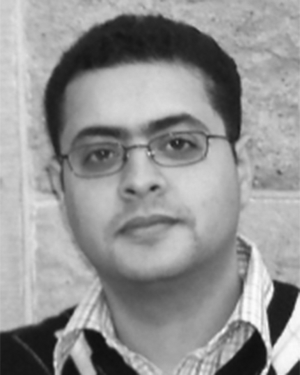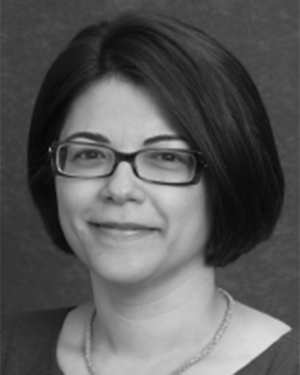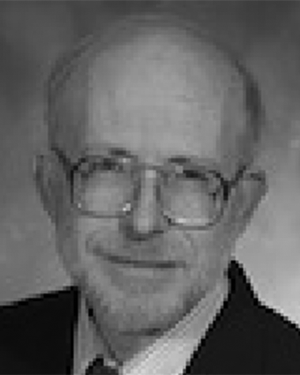Abstract:
Objective: A characteristic of neurological signal processing is high levels of noise from subcellular ion channels up to whole-brain processes. In this paper, we propose...Show MoreMetadata
Abstract:
Objective: A characteristic of neurological signal processing is high levels of noise from subcellular ion channels up to whole-brain processes. In this paper, we propose a new model of electroencephalogram (EEG) background periodograms, based on a family of functions which we call generalized van der Ziel–McWhorter (GVZM) power spectral densities (PSDs). To the best of our knowledge, the GVZM PSD function is the only EEG noise model that has relatively few parameters, matches recorded EEG PSD's with high accuracy from 0 to over 30 Hz, and has approximately 1/f^\theta behavior in the midfrequencies without infinities. Methods: We validate this model using three approaches. First, we show how GVZM PSDs can arise in a population of ion channels at maximum entropy equilibrium. Second, we present a class of mixed autoregressive models, which simulate brain background noise and whose periodograms are asymptotic to the GVZM PSD. Third, we present two real-time estimation algorithms for steady-state visual evoked potential (SSVEP) frequencies, and analyze their performance statistically. Results: In pairwise comparisons, the GVZM-based algorithms showed statistically significant accuracy improvement over two well-known and widely used SSVEP estimators. Conclusion: The GVZM noise model can be a useful and reliable technique for EEG signal processing. Significance: Understanding EEG noise is essential for EEG-based neurology and applications such as real-time brain–computer interfaces, which must make accurate control decisions from very short data epochs. The GVZM approach represents a successful new paradigm for understanding and managing this neurological noise.
Published in: IEEE Transactions on Biomedical Engineering ( Volume: 64, Issue: 8, August 2017)
Funding Agency:

NeuroLogic Lab, University of Central Florida, Orlando, FL, USA
Alan Paris (S’13) received the B.S. degree in mathematics from
Massachusetts Institute of Technology, Cambridge, MA, USA, in 1984, and the M.S. degree in mathematical logic from
Cornell University, Ithaca, NY, USA, in 1988.
After working in industry as a Mathematician and Software Engineer, he entered a Ph.D. program at the University of
Central Florida, Orlando, FL, USA, with emphasis on neuroengineering.
He is the Foun...Show More
Alan Paris (S’13) received the B.S. degree in mathematics from
Massachusetts Institute of Technology, Cambridge, MA, USA, in 1984, and the M.S. degree in mathematical logic from
Cornell University, Ithaca, NY, USA, in 1988.
After working in industry as a Mathematician and Software Engineer, he entered a Ph.D. program at the University of
Central Florida, Orlando, FL, USA, with emphasis on neuroengineering.
He is the Foun...View more

Department of Electrical and Computer Engineering, University of Central Florida
George K. Atia (S’01–M’09) received the B.Sc. and
M.Sc. degrees from Alexandria University, Alexandria, Egypt, in 2000 and 2003, respectively, and the Ph.D. degree from
Boston University (BU), Boston, MA, USA, in 2009, all in electrical and computer engineering.
He joined the University of Central Florida in Fall 2012, where he is an Assistant Professor and a Charles N.
Millican Faculty Fellow in the Department of Elect...Show More
George K. Atia (S’01–M’09) received the B.Sc. and
M.Sc. degrees from Alexandria University, Alexandria, Egypt, in 2000 and 2003, respectively, and the Ph.D. degree from
Boston University (BU), Boston, MA, USA, in 2009, all in electrical and computer engineering.
He joined the University of Central Florida in Fall 2012, where he is an Assistant Professor and a Charles N.
Millican Faculty Fellow in the Department of Elect...View more

Department of Electrical and Computer Engineering, University of Central Florida
Azadeh Vosoughi (M’06–SM’14) received the B.S.
degree from Sharif University of Technology, Tehran, Iran, in 1997, the M.S. degree from Worcester Polytechnic
Institute, Worcester, MA, USA, in 2001, and the Ph.D. degree from Cornell University, Ithaca, NY, USA, in 2006, all in
electrical engineering. She is an Associate Professor in the Department of Electrical Engineering and Computer Science
at the University of Cent...Show More
Azadeh Vosoughi (M’06–SM’14) received the B.S.
degree from Sharif University of Technology, Tehran, Iran, in 1997, the M.S. degree from Worcester Polytechnic
Institute, Worcester, MA, USA, in 2001, and the Ph.D. degree from Cornell University, Ithaca, NY, USA, in 2006, all in
electrical engineering. She is an Associate Professor in the Department of Electrical Engineering and Computer Science
at the University of Cent...View more

College of Medicine, University of Central Florida, Orlando
Stephen A. Berman received the B.S. degree in physics from the
University of Illinois at Urbana-Champaign, Champaign, IL, USA, in 1970, and the M.D. degree and the Ph.D. degree in
biological chemistry, both from the University of Illinois, Chicago, IL, in 1974 and 1976, respectively. He is a
Professor of neurology in the Department of Internal Medicine at the University of Central Florida (UCF). He completed
his resid...Show More
Stephen A. Berman received the B.S. degree in physics from the
University of Illinois at Urbana-Champaign, Champaign, IL, USA, in 1970, and the M.D. degree and the Ph.D. degree in
biological chemistry, both from the University of Illinois, Chicago, IL, in 1974 and 1976, respectively. He is a
Professor of neurology in the Department of Internal Medicine at the University of Central Florida (UCF). He completed
his resid...View more

NeuroLogic Lab, University of Central Florida, Orlando, FL, USA
Alan Paris (S’13) received the B.S. degree in mathematics from
Massachusetts Institute of Technology, Cambridge, MA, USA, in 1984, and the M.S. degree in mathematical logic from
Cornell University, Ithaca, NY, USA, in 1988.
After working in industry as a Mathematician and Software Engineer, he entered a Ph.D. program at the University of
Central Florida, Orlando, FL, USA, with emphasis on neuroengineering.
He is the Founder and the Director of the NeuroLogic Laboratory in the Institute for Simulation & Training at
the University of Central Florida. His interests include the biophysics of ion channels, generalized stochastic
processes in neural tissue, biomimetic computation, applications of mathematical logic to brain structure, and the
etiology of childhood epilepsy.
Alan Paris (S’13) received the B.S. degree in mathematics from
Massachusetts Institute of Technology, Cambridge, MA, USA, in 1984, and the M.S. degree in mathematical logic from
Cornell University, Ithaca, NY, USA, in 1988.
After working in industry as a Mathematician and Software Engineer, he entered a Ph.D. program at the University of
Central Florida, Orlando, FL, USA, with emphasis on neuroengineering.
He is the Founder and the Director of the NeuroLogic Laboratory in the Institute for Simulation & Training at
the University of Central Florida. His interests include the biophysics of ion channels, generalized stochastic
processes in neural tissue, biomimetic computation, applications of mathematical logic to brain structure, and the
etiology of childhood epilepsy.View more

Department of Electrical and Computer Engineering, University of Central Florida
George K. Atia (S’01–M’09) received the B.Sc. and
M.Sc. degrees from Alexandria University, Alexandria, Egypt, in 2000 and 2003, respectively, and the Ph.D. degree from
Boston University (BU), Boston, MA, USA, in 2009, all in electrical and computer engineering.
He joined the University of Central Florida in Fall 2012, where he is an Assistant Professor and a Charles N.
Millican Faculty Fellow in the Department of Electrical and Computer Engineering. From Fall 2009 to 2012, he was a
Postdoctoral Research Associate in the Coordinated Science Laboratory at the University of Illinois, Urbana-Champaign,
IL, USA. His research interests include statistical signal processing, machine learning, brain signal processing,
wireless communications, detection and estimation theory, and information theory.
Dr. Atia received many awards, including the NSF CAREER Award in 2016, the Outstanding Graduate Teaching Fellow of
the Year Award in 2003–2004 from the Electrical and Computer Engineering Department, BU, the 2006 College of
Engineering Dean's Award at the BU Science and Engineering Research Symposium, and the Best Paper Award at the
International Conference on Distributed Computing in Sensor Systems in 2008.
George K. Atia (S’01–M’09) received the B.Sc. and
M.Sc. degrees from Alexandria University, Alexandria, Egypt, in 2000 and 2003, respectively, and the Ph.D. degree from
Boston University (BU), Boston, MA, USA, in 2009, all in electrical and computer engineering.
He joined the University of Central Florida in Fall 2012, where he is an Assistant Professor and a Charles N.
Millican Faculty Fellow in the Department of Electrical and Computer Engineering. From Fall 2009 to 2012, he was a
Postdoctoral Research Associate in the Coordinated Science Laboratory at the University of Illinois, Urbana-Champaign,
IL, USA. His research interests include statistical signal processing, machine learning, brain signal processing,
wireless communications, detection and estimation theory, and information theory.
Dr. Atia received many awards, including the NSF CAREER Award in 2016, the Outstanding Graduate Teaching Fellow of
the Year Award in 2003–2004 from the Electrical and Computer Engineering Department, BU, the 2006 College of
Engineering Dean's Award at the BU Science and Engineering Research Symposium, and the Best Paper Award at the
International Conference on Distributed Computing in Sensor Systems in 2008.View more

Department of Electrical and Computer Engineering, University of Central Florida
Azadeh Vosoughi (M’06–SM’14) received the B.S.
degree from Sharif University of Technology, Tehran, Iran, in 1997, the M.S. degree from Worcester Polytechnic
Institute, Worcester, MA, USA, in 2001, and the Ph.D. degree from Cornell University, Ithaca, NY, USA, in 2006, all in
electrical engineering. She is an Associate Professor in the Department of Electrical Engineering and Computer Science
at the University of Central Florida. Her research interests lie in the areas of statistical signal processing,
distributed detection and estimation theory, brain signal processing, and wireless communications. She received the
NSF CAREER Award in 2011.
Azadeh Vosoughi (M’06–SM’14) received the B.S.
degree from Sharif University of Technology, Tehran, Iran, in 1997, the M.S. degree from Worcester Polytechnic
Institute, Worcester, MA, USA, in 2001, and the Ph.D. degree from Cornell University, Ithaca, NY, USA, in 2006, all in
electrical engineering. She is an Associate Professor in the Department of Electrical Engineering and Computer Science
at the University of Central Florida. Her research interests lie in the areas of statistical signal processing,
distributed detection and estimation theory, brain signal processing, and wireless communications. She received the
NSF CAREER Award in 2011.View more

College of Medicine, University of Central Florida, Orlando
Stephen A. Berman received the B.S. degree in physics from the
University of Illinois at Urbana-Champaign, Champaign, IL, USA, in 1970, and the M.D. degree and the Ph.D. degree in
biological chemistry, both from the University of Illinois, Chicago, IL, in 1974 and 1976, respectively. He is a
Professor of neurology in the Department of Internal Medicine at the University of Central Florida (UCF). He completed
his residency in neurology in 1980, where he was a Postdoctoral Fellow in neuroscience. He completed additional
fellowship training in neurology at Harvard Medical School. He also served on the faculties of the University of
Texas, Louisiana State, Harvard, and Dartmouth Medical School, where he was a Professor of neurology, before becoming
a Professor and Founding Faculty member at the UCF College of Medicine. His research interests include
neurodegenerative diseases and changes in brain function with aging as well as the use of physical and biophysical
methods to better understand brain function. As a Junior Faculty at the University of Chicago, he received an NIH
Teacher Investigator Award.
Stephen A. Berman received the B.S. degree in physics from the
University of Illinois at Urbana-Champaign, Champaign, IL, USA, in 1970, and the M.D. degree and the Ph.D. degree in
biological chemistry, both from the University of Illinois, Chicago, IL, in 1974 and 1976, respectively. He is a
Professor of neurology in the Department of Internal Medicine at the University of Central Florida (UCF). He completed
his residency in neurology in 1980, where he was a Postdoctoral Fellow in neuroscience. He completed additional
fellowship training in neurology at Harvard Medical School. He also served on the faculties of the University of
Texas, Louisiana State, Harvard, and Dartmouth Medical School, where he was a Professor of neurology, before becoming
a Professor and Founding Faculty member at the UCF College of Medicine. His research interests include
neurodegenerative diseases and changes in brain function with aging as well as the use of physical and biophysical
methods to better understand brain function. As a Junior Faculty at the University of Chicago, he received an NIH
Teacher Investigator Award.View more


